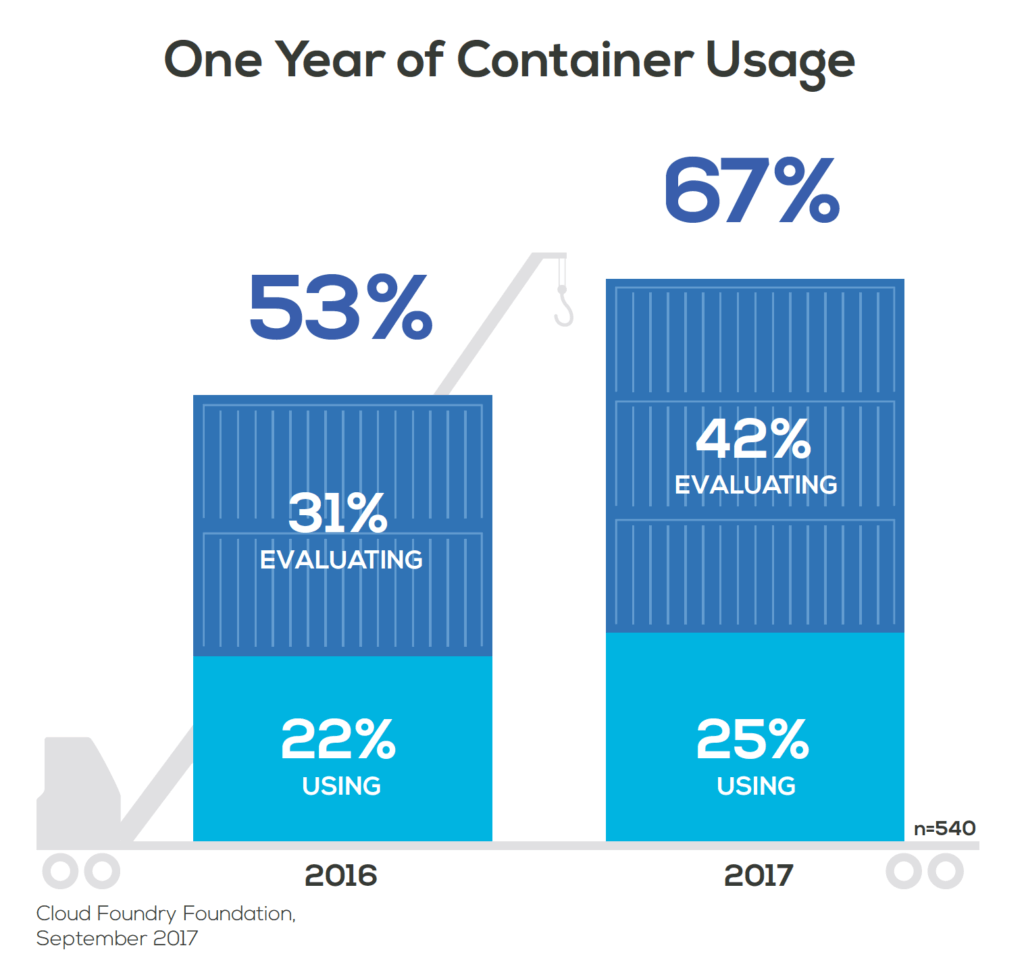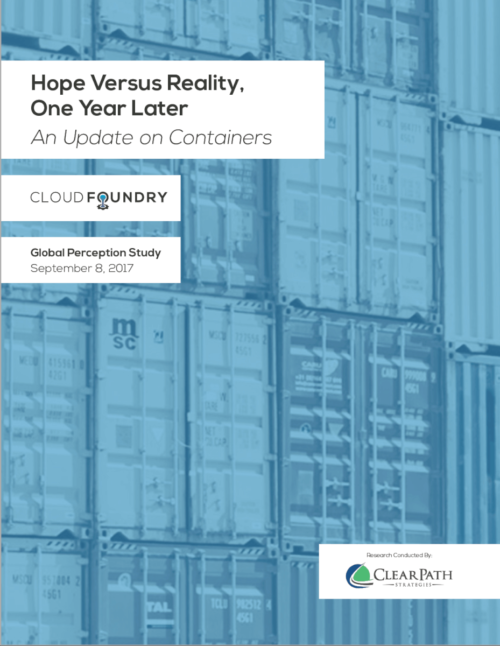Last year, we published an extensive report on the status of container adoption in the enterprise as part of our Global Perception Study series. You can read an overview of that 2016 report in my blog post from last summer. Now, we’ve released a follow-up to last year’s research in a brand new report called Hope Versus Reality, One Year Later: An Update on Containers.
Building on last year’s findings, this report serves as further evidence that enthusiasm for the potential of containers continues to outpace actual adoption. Containers are not a new technology; nevertheless, there are complexities around deploying, managing and orchestrating containers at scale.
Since we published the 2016 Container Report, there has been a three percent uptick among enterprises actually using containers while 11 percent more are in the process of evaluating container usage. Again, this is demonstrative of the fact that more organizations are talking the talk than walking the walk when it comes to containers. When you read the full 2017 Container Report, you’ll see further analysis from Evans, Datadog, Portworx, Sysdig and Google Trends, on the rate of container adoption and its implications.

I’ve worked at quite a few large companies, and I understand the complications that come along with implementing new technologies. Enterprises are the colossal cargo ships of the industry — they move slowly, steadily and with a rigorous navigation system. They cannot always afford to be as flexible or lithe as a smaller company, so it takes time to evaluate new technologies before implementation.
As these enterprises begin updating systems, they require even more technology to control those systems — and our report shows evidence that many of these organizations are choosing Kubernetes for container orchestration. As we see interest in containers rising and enterprises must select an orchestration tool, the need for a uniform way to instantiate, deploy and manage Kubernetes clusters is greater than ever before. And I’m not the only one who noticed — teams at VMware and Google collaborated on a project called Kubo (short for “Kubernetes on BOSH”) to do exactly that.
I don’t want to give away all the findings in our rich report, so I encourage you to download it and read it for yourself to get a grasp on what the data shows about container adoption, orchestration and the evolving tool sets we need in a rapidly growing industry.




